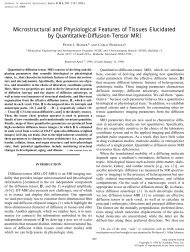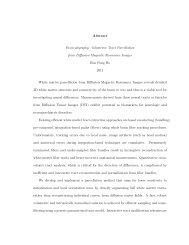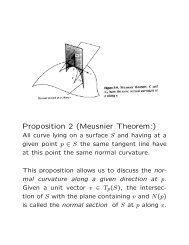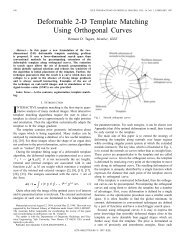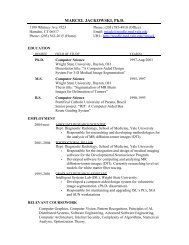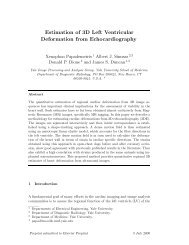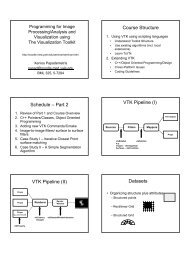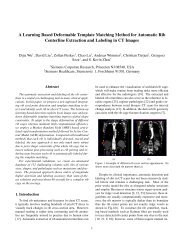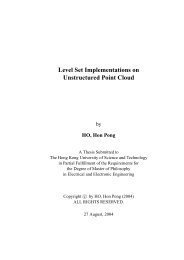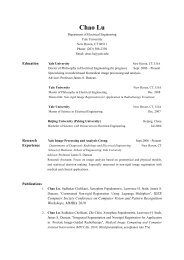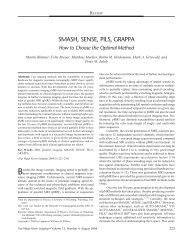Pulsed-field gradient nuclear magnetic resonance as a tool for ...
Pulsed-field gradient nuclear magnetic resonance as a tool for ...
Pulsed-field gradient nuclear magnetic resonance as a tool for ...
Create successful ePaper yourself
Turn your PDF publications into a flip-book with our unique Google optimized e-Paper software.
202<br />
PRICE<br />
Figure 4 An example of a shielded <strong>magnetic</strong> <strong>gradient</strong> coil system in an NMR probe head.<br />
Only the coil <strong>for</strong>mers are shown, and the wires can be imagined to be wound around the<br />
slots on the <strong>for</strong>mers. The primary <strong>gradient</strong> coil produces the constant <strong>gradient</strong> over the<br />
sample volume which is contained within the rf coils. The shield coil is designed to prevent<br />
the <strong>gradient</strong> pulse from affecting outside the <strong>gradient</strong> coils, thereby preventing the generation<br />
of eddy currents adapted from Price et al. Ž 6 ..<br />
In very high <strong>gradient</strong> systems, the actual<br />
<strong>gradient</strong> coils must be air or water cooled. The position of the thermocouple is critical <strong>for</strong><br />
the accuracy and stability of the temperature control. The inclusion of <strong>gradient</strong> coils in the<br />
probe head normally makes the probe more difficult to shim.<br />
to obtain the diffusion tensor Žsee<br />
Part 1,<br />
Anisotropic Diffusion . .<br />
Amplifiers<br />
Ideally, we desire infinitely f<strong>as</strong>t rise and fall times<br />
of the <strong>gradient</strong> pulses. In practice, there are two<br />
factors which limit the maximum current switching<br />
speed; the first is that the power supply voltage<br />
must equal RI LdIdt, where I is the<br />
current and L and R are the load Ži.e.,<br />
<strong>gradient</strong><br />
coils plus leads. inductance and resistance, respectively,<br />
and the second is the slew rate Ži.e.,<br />
the maximum rate of change of the output voltage.<br />
of the power supply. Thus, the amplifier used<br />
must have suitable current and voltage parameters<br />
to drive the <strong>gradient</strong> coil used. Typically rise<br />
and fall times of the <strong>gradient</strong> pulses are on the<br />
order of 50 s.<br />
Since the current through a <strong>gradient</strong> coil induces<br />
heating, which in turn results in a change in<br />
<strong>gradient</strong> coil resistance, the amplitude of the gra-



